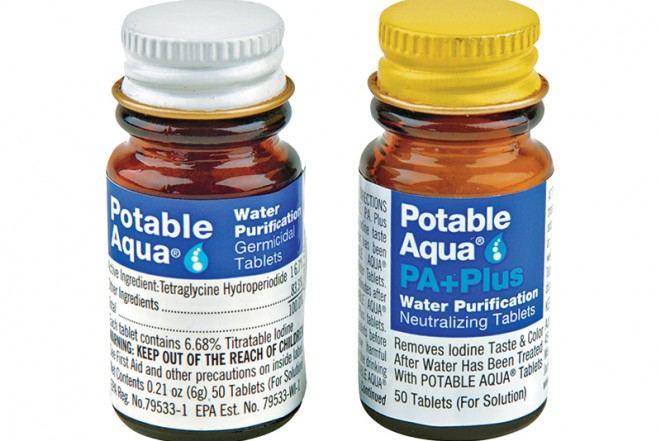Bleach or Purification Tablets– Which is the Best Option?
Bleach
You should only use pure, chlorinated bleach that has an 8.25 % concentration of sodium hypochlorite. This a common combination, and you should be able to find it in most supermarkets. However, you need to look at the label to ensure that you are purchasing bleach with this particular concentration because there are a range of different bleach products on the market. You also want to avoid using color-safe, scented or bleaches that contain additional cleaning chemicals as well.
The biggest drawback to using bleach as a water purifier is that it can alter the taste and texture of the water. Another issue arises when incorrect proportions of bleach to water are used. Too much bleach can lead to a burning sensation and potential health problems whereas too little bleach will not kill off the pathogens that are found in the water. The general consensus from health departments is to add 6 drops of bleach to every gallon of water. Do this with a medicine dropper in order to ensure accuracy.
However, double this amount if you are using water that is cloudy or extremely cold.
One way to reduce the cloudiness of water is to pour it through a cheese cloth to remove extra impurities. Once the water is ready, add the bleach at the standard dose, shake and let it sit for 30 minutes. Smell the water and look for a slight chlorine odor. If there is no odor present, add a few more drops and allow the water to sit for an additional 15 minutes. You may encounter water that has a strong chlorine odor as well. All you need to do is pour the water into a new, clean container and allow it to rest for a couple of hours and it should be fine.
Purification Tablets
Most purification tablets contain some form of chlorine. The most common ingredient in good tablets is either sodium dichloroisocyanurate or troclosene sodium. The main difference with using tablets is that you are adding bleach to the water. The taste and texture of the water will be more “natural” than using bleach, but the benefits are essentially the same.
It is important that you make sure to use the right proportion of tablets to water. Tablets come in a variety of sizes that are intended to purify a specific amount of water. Using too much can impact the taste and quality of your water supply, and you can actually get sick if you ingest high concentrations. Using too little can limit its effectiveness in terms of purifying your water and fail to kill off all of the pathogens.
Another consideration is to keep an eye on expiration dates. Bleach generally has a shelf life of about a year and tablets will vary from product to product. Use both options before their expiration date to avoid putting yourself at risk from drinking contaminated water. The only other limitation to think about is weight and bulk. Bleach is heavy and can’t be transported easily. It makes an ideal option to have at home, but tablets obviously work better during a bug out situation or in the field.
Keep in mind that boiling water is the best way to kill off contaminants in water, so use that as your first option before adding chlorine to your supplies. However, these options work quite well if you need to process a large amount of water or don’t have access to a source of heat.


